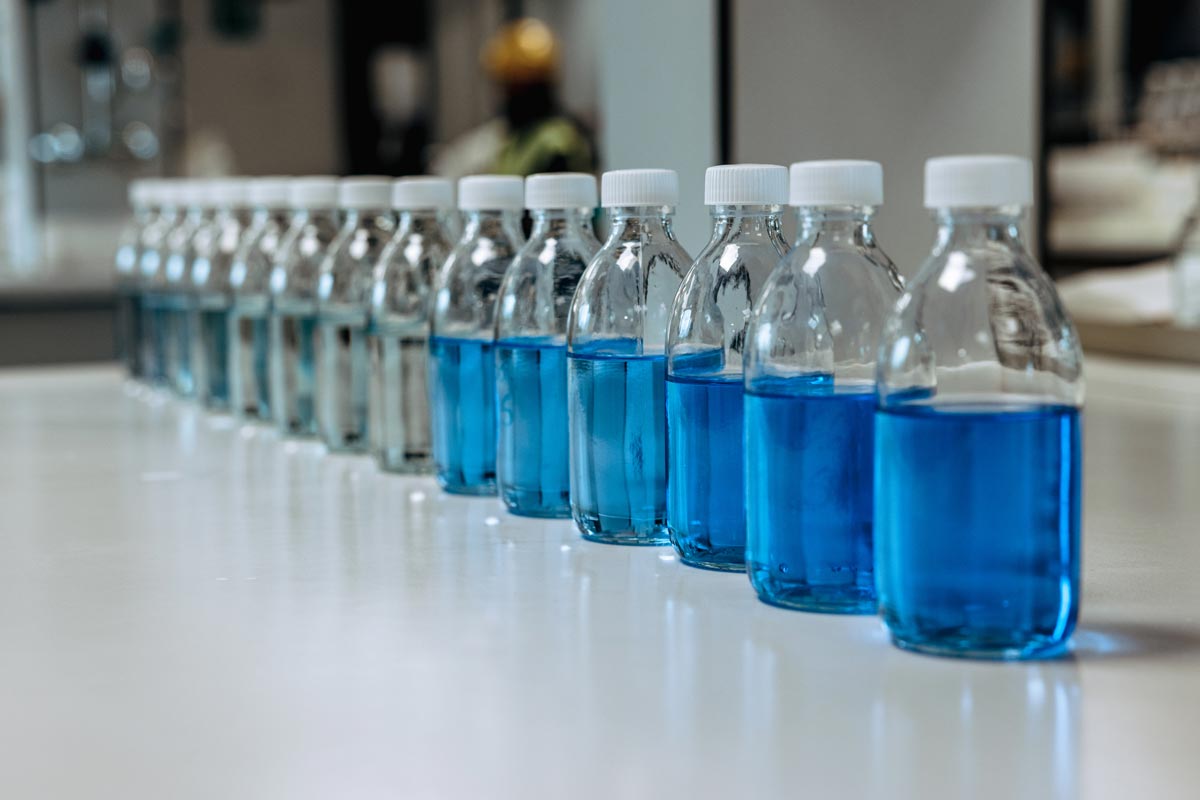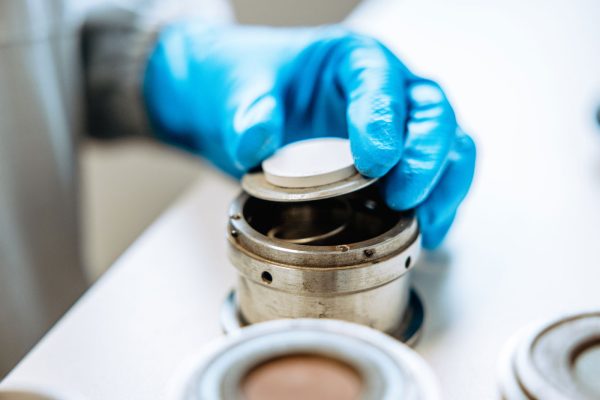Research and Development
This expertise was developed on the Hydrometal site and today houses the Research and Development center for the entire group.


This expertise was developed on the Hydrometal site and today houses the Research and Development center for the entire group.
Our R&D department develops tailor-made recovery processes to meet our customers’ needs and specifications to work towards economic and ecological solutions for the recovery of secondary materials (residues, by-products, waste, etc.) containing non-ferrous metals.
We are continually seeking to improve the treatment processes of the Group’s entities by improving yields, optimizing energy and reagent consumption, and improving secondary products recovery.
The JGI-HYDROMETAL group is also associated with several Belgian and European research projects which aim to combine the skills of various actors to develop innovative value chains for the recycling of strategic metals.

The “REVERSE METALLURGY” group aims to create in Wallonia an internationally recognized platform of industrial, technological, and scientific excellence in recycling, creating added value and jobs. In this context, the Reverse Metallurgy submitted in 2015 projects partly financed by the Walloon region, including the PLASMETREC project, which HYDROMETAL is a part. This project has three branches: PLASMA, ATHENA, and GERMANIUM PROJECT.
The PLASMA axis is a close collaboration between the Metallurgical Research Center (CRM) and HYDROMETAL. The objective is the construction of a plasma furnace by the CRM on the HYDROMETAL site to combine hydrometallurgy with pyrometallurgy for either precious metals or metals with very high added value.
The GERMANIUM project is based on an innovative ion exchange process to recover germanium. The germanium contained in complex secondary materials can indeed be selectively recovered and concentrated to reintegrate germanium refineries. This project was studied on a laboratory scale and then developed on an industrial prototype.
The ATHENA project is a collaboration with Silox, a company in our group, to produce high-purity active zinc salts which will be sold in particular for the vulcanization of tire rubber. For laboratory research, the two manufacturers called on the know-how of the Center Terre et Pierre (CTP). This project will be tested on a larger scale in a future project which should start in 2023.

As part of the National Recovery and Resilience Plan (PNRR) launched by Europe and the government, a new component of REVERSE METALLURGY has emerged: REVERSE METALLURGY + with the aim of financing new projects for the economic recovery. HYDROMETAL is a partner in two of these projects: PYROTECNIC and CISTEMEEC.
The Industrial value Chain, Energy Transition, Electric Mobility and Circular Economy (C8677) or CISTEMEEC project is a partnership of 6 industrialists, 2 research centers and 3 departments of the University of Liège benefiting from a €16.6 million financial support from the Walloon region.
This project contains several areas of metal recovery, where HYDROMETAL is part of the battery recycling part, from dismantling to the recovery of battery precursors, i.e. metals of sufficient purity to be reintroduced into a battery production line.
The project begins with a laboratory research part and then a pilot construction and operation part. A battery recovery chain will thus be created:
The primary objective of the in-lab hydrometallurgical part is to study the impact of the upstream heat treatment on the downstream process.
The PYROmetallurgy and Intelligent CoNditioning TEchniques for the Circular Economy (C8692) or PyroTeCnIC industrial sector project is a continuation of the projects of the first part of REVERSE METALLURGY, especially the PLASMA axis of the PLASMETREC project. The consortium counts 9 companies, 1 research center and 2 departments of the University of Liège with a financial aid of 8.5M€ funded by the Walloon Region.
Thus, the objective of HYDROMETAL in this project is to test hydrometallurgical pre-treatments or post-treatments (in lab) for materials with very high added value intended for pyrometallurgy in the plasma furnace built in the 2015 project by the CRM.

The AKER project (Convention 202210120) is part of a strategic plan adopted by the European Commission to make Europe a leader in the sustainable and competitive production of batteries: the IPCEI (Important Project of Common European Interest) batteries called Eubatin.
This project aims to develop a 100% hydrometallurgical recycling process allowing the recovery of the elements contained in the active material of Li-ion batteries, called black mass.
The extracted metals will be reinjected into existing European production lines, ensuring the circularity of the Li-ion battery value chain. The AKER project has received dual approval (European and regional levels) and benefits from aid of 3.3 million euros.

RHINOCEROS (convention 101069685), for Batteries Reuse and direct production of HIgh performaNces cathOdic and anodiC matErials and other raw materials from batteRies recycling using low cOst and environmentally friendly technologieS) received a grant from the Horizon Europe program of more than 9 million euros.
Its objective is to develop, improve and demonstrate, in relevant industrial environments, economically and environmentally viable routes for the reuse and recycling of stationary batteries and electric vehicles. The duration of the project is 48 months, including a research and development phase, followed by implementation of the process developed on a pilot scale.

REEPRODUCE (Convention 101057733) for Dismantling and Recycling Rare Earth Elements from End-of-life PRODUCts for the European Green Transition, is a 48-months project with an allocated budget of 10.1 million euros from the EU research and innovation program “HORIZON EUROPE”. The project brings together 15 European actors.
Its objective is to contribute to European industrial leadership and increase autonomy in key strategic value chains with security of supply of raw materials.
It sets for the first time, a resilient and complete European value chain for the recycling of rare earths on an industrial scale. More than a “simple” rare earths recycling, it also aims to optimize costs compared to primary production and to expand socially eco-friendly sustainable technologies.
As part of this project, pilots following a chain of rare earths recovery from permanent magnets will be set up at certain project partners ‘site, including the hydrometallurgical pilot which will be based on the HYDROMETAL site.